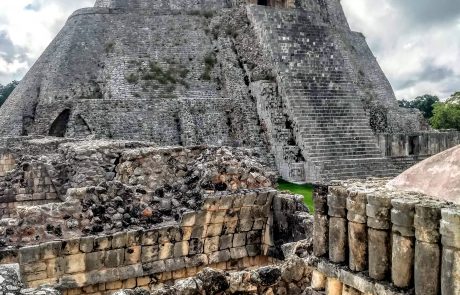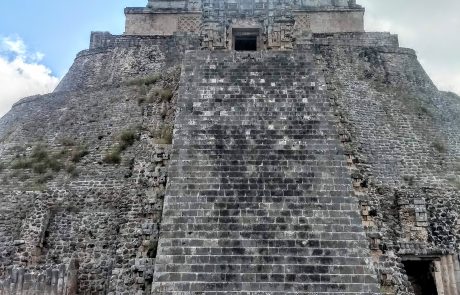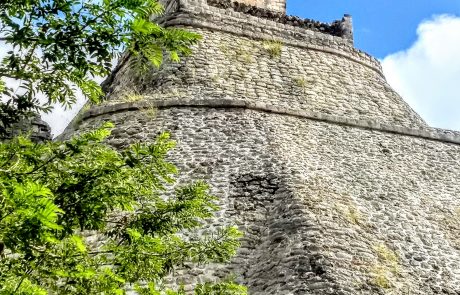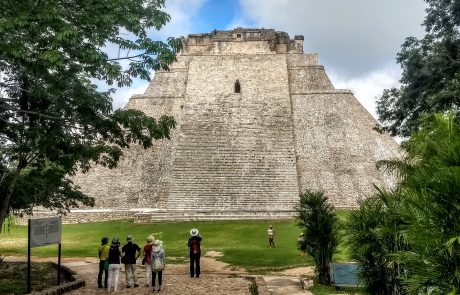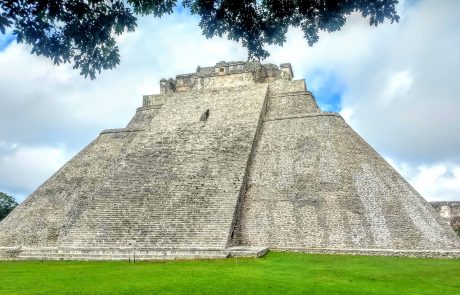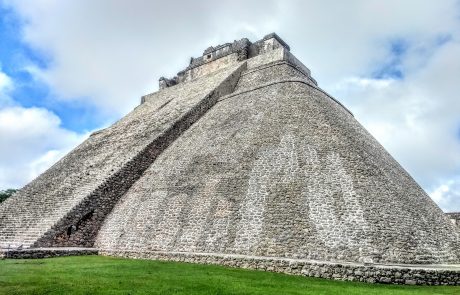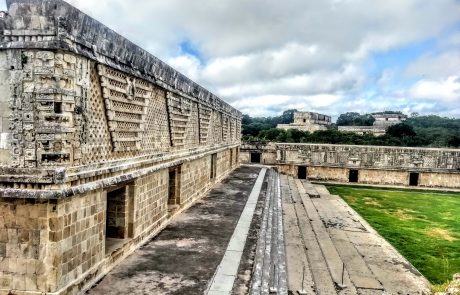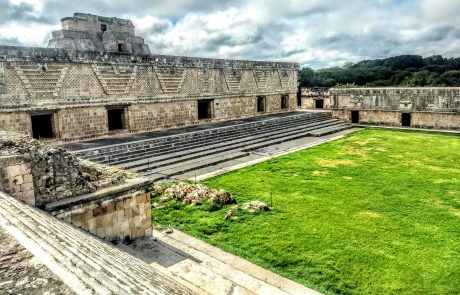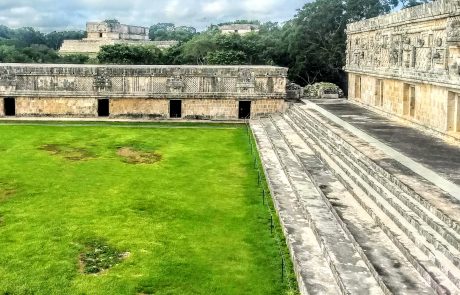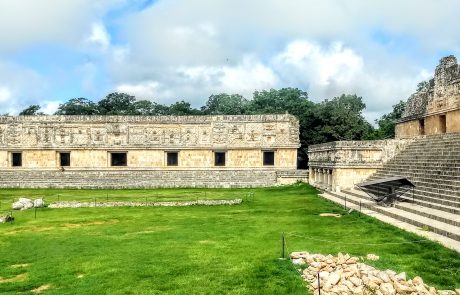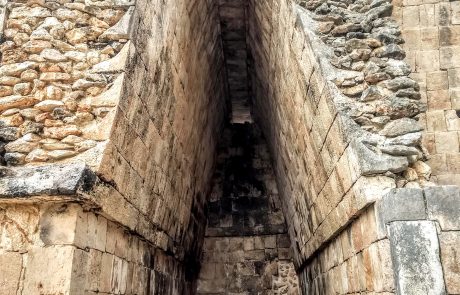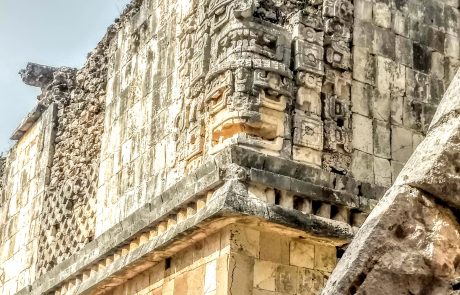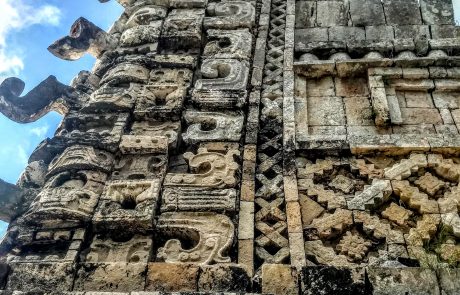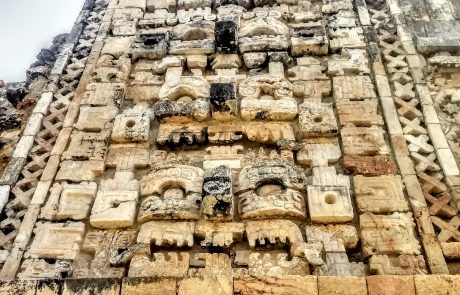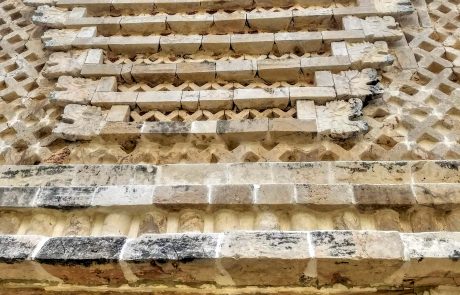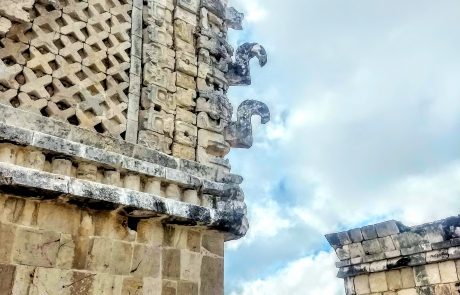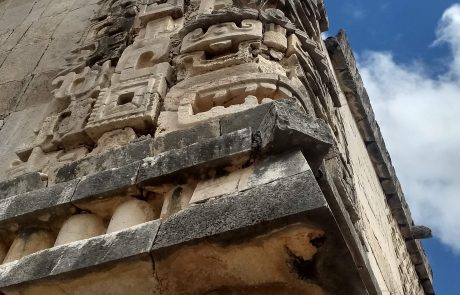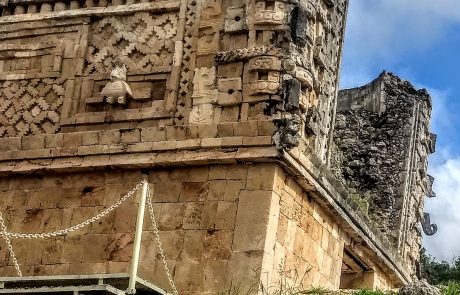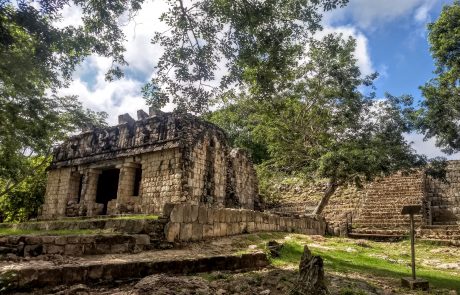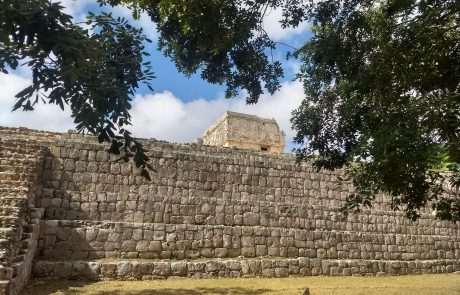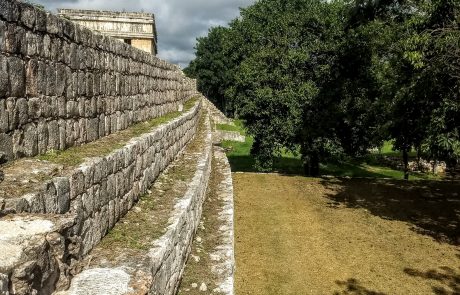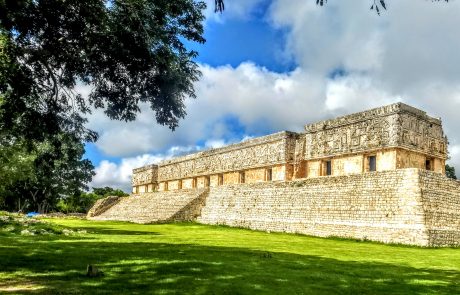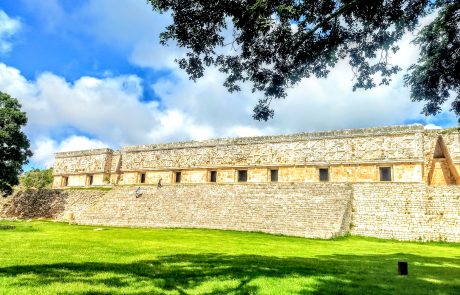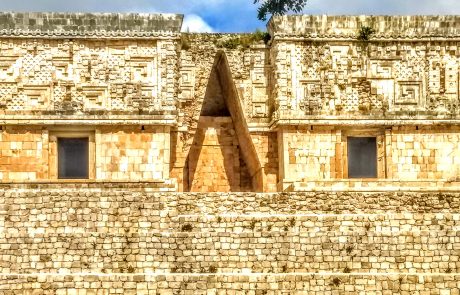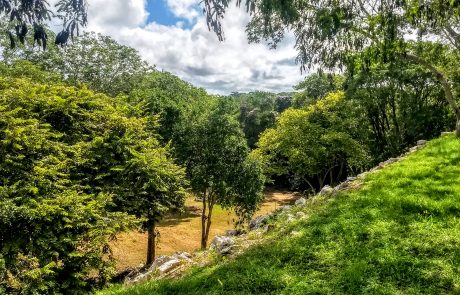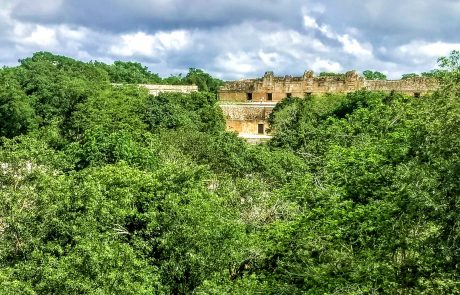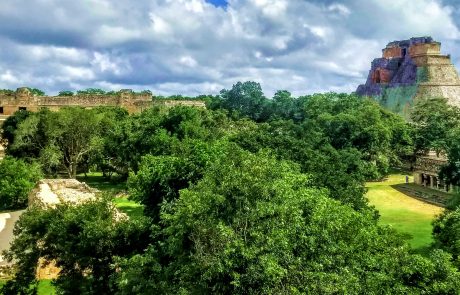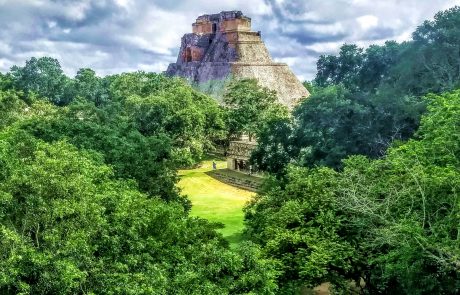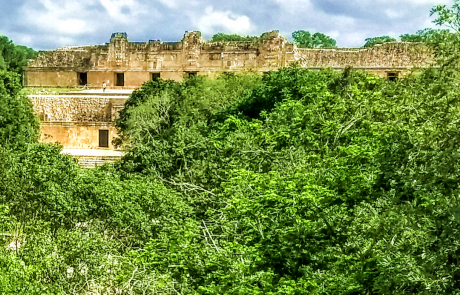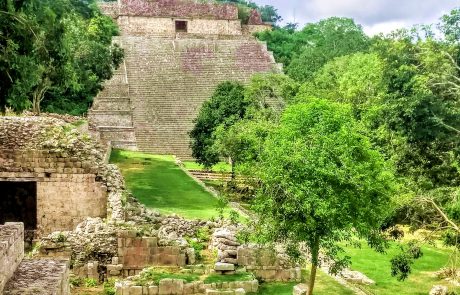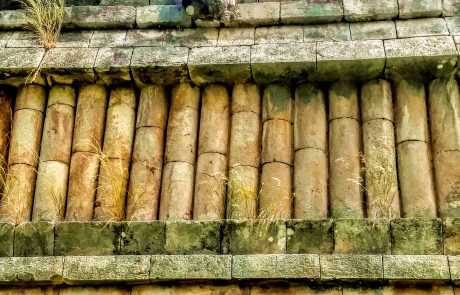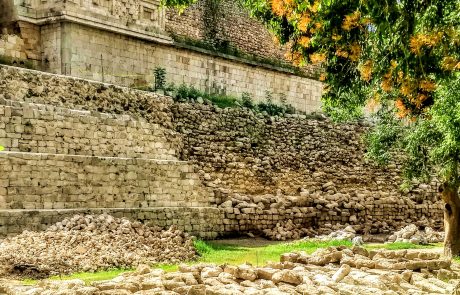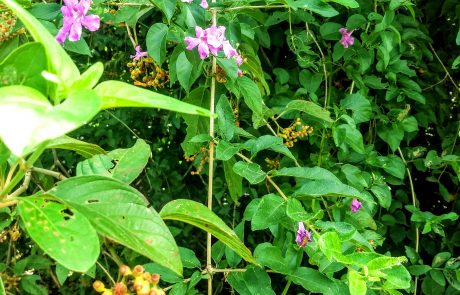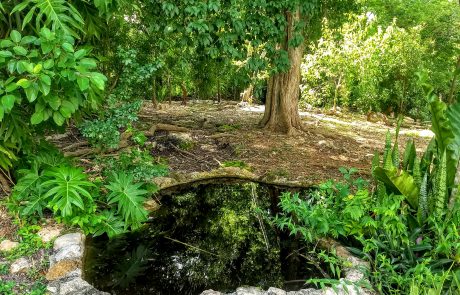October 2019
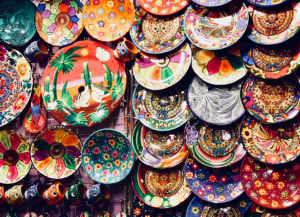 In this second part of the post on Uxmal I’ll focus on the archeological site itself, which is the second most visited site in Yucatan after Chichen Itza — and with good reason. It’s immensely impressive and gave me for the first time a clear sense of just why places like Uxmal deserve to be called cities. When one considers that the excavated structures at Uxmal represent only a fraction of the full city as it existed at the time of Uxmal’s apogee in Mayan history, it’s clear that such sites were on the same level as the major metropolitan centers in Central Mexico.
In this second part of the post on Uxmal I’ll focus on the archeological site itself, which is the second most visited site in Yucatan after Chichen Itza — and with good reason. It’s immensely impressive and gave me for the first time a clear sense of just why places like Uxmal deserve to be called cities. When one considers that the excavated structures at Uxmal represent only a fraction of the full city as it existed at the time of Uxmal’s apogee in Mayan history, it’s clear that such sites were on the same level as the major metropolitan centers in Central Mexico.
The history of Uxmal is long and has many twists and turns. Let’s start with some information from the Wikipedia page on the site (here):
While much work has been done at the popular tourist destination of Uxmal to consolidate and restore buildings, little in the way of serious archeological excavation and research has been done. The city’s dates of occupation are unknown and the estimated population (about 15,000 people) is a rough guess. Most of the city’s major construction took place while Uxmal was the capital of a Late Classic Maya state around 850-925 AD. After about 1000 AD, Toltec invaders took over, and most building ceased by 1100 AD.
Maya chronicles say that Uxmal was founded about 500 A.D. by Hun Uitzil Chac Tutul Xiu. For generations Uxmal was ruled over by the Xiu family. It was the most powerful site in western Yucatán, and for a while, in alliance with Chichen Itza, dominated all of the northern Maya area. Sometime after about 1200, no new major construction seems to have been made at Uxmal, possibly related to the fall of Uxmal’s ally Chichen Itza and the shift of power in Yucatán to Mayapan. The Xiu moved their capital to Maní, and the population of Uxmal declined.
Uxmal was dominant from 875 to 900 CE. The site appears to have been the capital of a regional state in the Puuc region from 850-950 CE. The Maya dynasty expanded their dominion over their neighbors. This prominence did not last long, as the population dispersed around 1000 CE.
The site is administered by the Instituto Nacional de Antropologia e Historia (INAH) and is a major tourist destination with all that goes along with it — for example, vendors outside in the parking lot, cafes at the entrance facility, and guides you can hire. Entrance is not cheap — for the likes of your foreign self it’s about USD $23. Mexican nationals pay less and Yucatecans get an additional break. Parking is about $8. So it’s not a particularly cheap date, considering that other sites in the vicinity are on the order of $4 with no charge for parking and offer full access to the buildings, as I’ll describe in the post on the Ruta Puuc sites. But it’s worth the price because you have the opportunity to see a full-on Mayan city that looks like such and the tourist crowd is always far, far less than it is at Chichen Itza. So I slapped down the pesos knowing that this was the one time in my life I’ll be at Uxmal and it’s good value for my experience dollar.
Here are some pics of the site to get started:
When you go up the steps to begin visitation of the site you first come to the back side of the main temple, the Temple of the Magician. The story goes that a dwarf used magical powers to build it in one night. Sounds like something you’d hear come out of the White House these days, so let’s not worry our pretty little heads about it. It’s an impressive structure and the size is definitely imposing. The smooth, rounded sides are unusual because most Mayan temples are step-pyramids. It serves as a suitable wow moment to get things rolling.
The layout of the site is perhaps best seen in the diagram given on themayanruinswebsite.com which I reproduce here:
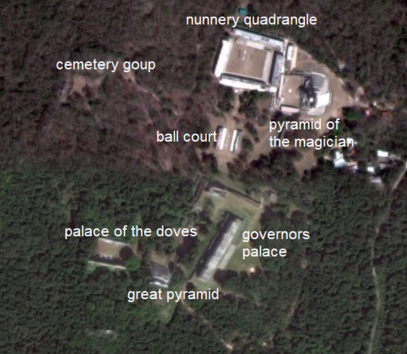
So the pics above are at the Temple of the Magician which adjoins the Nunnery Quadrangle — although let’s be clear about there never having been any nuns in the picture. The silly Spanish thought up that name for some reason entirely opaque to my understanding.
The Quadrangle adjoining the Temple of the Magician is indeed impressive and the first Mayan structure that gave me a clear sense of being in a decidedly urban environment. In other words, these weren’t just a couple buildings stuck out in the middle of the jungle, this was an architectural ensemble that formed part of an urban landscape with lots — and I mean LOTS — of other buildings. So, to the pics:
The architectural style of Uxmal and the Ruta Puuc is called the Puuc style because it developed in the Puuc region. It’s noticeably different from the architectural styles in other regions of the Mayan world. Here’s a description from the Wikipedia page (here):
In the florescence of Puuc architecture (such as at the ancient Maya site of Uxmal) buildings were decorated with carefully cut veneer stones set into a concrete core. The lower portion of the façades are blank with a flat surface of rectangular blocks punctuated by doorways, while the upper façade is richly decorated with intricate stone mosaics, often alternating repeated geometric elements with more elaborate figurative sculpture. Long-nosed masks (commonly believed to be of the Maya rain god Chaac) are found on many Puuc buildings.
Beyond the impressive decorative elements of Puuc architecture, the use of a concrete core is also considered an architectural advance beyond the earlier Maya technique of using larger stones (set on top of one another in lime and mud mortar) for structural support. The concrete core-veneer masonry allowed for slightly larger and more stable interior rooms. Many corbelled vaults in the Puuc style remain standing, even when most of the veneer stones have fallen away.
The most famous of the Maya sites exhibiting the Puuc architectural style is Uxmal; other major Puuc-style sites in the region include Labna, Kabah, Sayil and Xlapak. The architectural style is also seen at Kiuic, Bolonchen, Chunhuhub, Xculoc, and many smaller ruins. The transition from earlier Classic Period architecture to Puuc style core-veneer masonry is well documented at the site of Oxkintok. To the south, the style can be found in Edzná; and to the east at Chichen Itza (outside of the Puuc Hills region).
The Puuc style fascinates me especially and drew me to the region to see the sites. The pictures I had seen of it seemed to me much more complex aesthetically than the decorative schemes elsewhere in the Mayan world so I wanted to have an up-close and personal experience with it. And that’s exactly what I got. So, on to some pics of architectural detail in the Quandrangle area:
The first pic is of a Mayan corbelled arch. The Mayans never developed a round arch like the Romans, it only went as far as the corbelled arch of the type you see in the pic. There’s another fine example at Labnah which I’ll detail in the post on the Ruta Puuc sites. The masks you see on the corners of the buildings are all Chaac, the Mayan rain god — obviously the Big Kahuna of this part of the Mayan world. The protuberant nose you see in some of the masks was a feature of Chaac iconography in this setting. Not all of the noses have survived. Even more interesting to me than the masks are the decorative elements filling in the pictorial space. They show the same fixation on geometric shape and complexity of design that you find in Islamic art. Obviously this strain of decorative design has some root in human perception that transcends any one culture. Pics 5 and 6 show that geometric complexity especially well. When you can get up close to it the symmetry of the patterns becomes obvious. In looking at the decorative scheme I tried to identify what elements organized the pictorial elements — symmetry? Repetitive geometrical patterns? Just doing whatever felt right that day? Symmetry and repetition obviously play major roles in the organization of the decorative scheme. Things are a bit more complex than they are in the symmetry of, say, European Baroque ornamentation. Getting up close and personal with the Puuc ornamentation at Uxmal provided a good basis for examining the pictorial schemes at the Ruta Puuc sites, which I’ll discuss in detail in the post on that excursion.
From the Quadrangle complex you move across relatively open areas to the other major group on the top of the adjacent hill with the Governor’s Palace, the House of the Turtles, and the Grand Pyramid. In the histories of Mayan culture and art I read before arriving in the Yucatan I came across talk of “platforms” on which temples were built. I never really understood completely just how massive these things are until I saw the one at Uxmal on which the Governor’s Palace sits. The amount of work involved in building the platform boggles the mind and makes the construction of the temple buildings seem like child’s play by comparison. Here are some pics of the platform in question:
The platform is in effect the same kind of construction used to build a temple — only on a much more massive scale. I can’t wrap my mind around the organization and construction of such a massive thing. Hats off to the Mayans, who accomplished it without the wheel, metal tools or beasts of burden. Considering that I was sweating like a stuck pig just walking around the site, let alone hauling 1-ton stone blocks to build a platform, I can only imagine how many gallons of sweat went into the construction of that platform. It boggles the mind.
When you reach the top of the platform the Governor’s Palace stands before you in all its handsomeness. It’s an extremely elegant building in both its proportions and its ornamentation. I’ll give the pics a chance to make that case before commenting:
To the pics above I’ll add one detail shot that shows the elements of the frieze a bit more clearly:
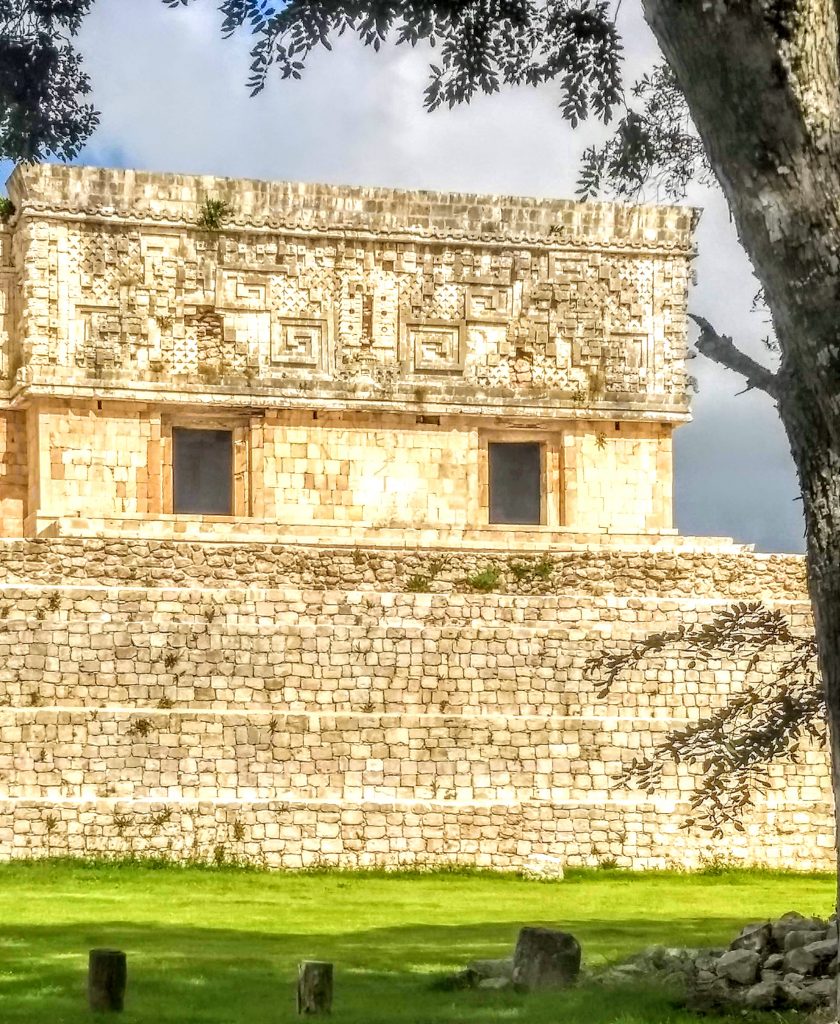
When faced with the close-up of the frieze my brain goes into a scramble. Being European through and through I look to decode the decorative scheme based on the patterns native to me from the European tradition. Here’s an example from Dientzenhofer’s magnificent church of St. Michael (Kostel svatého Mikuláše) in Prague:

The organizational principle underlying Dientzenhofer’s image is immediately apparent to my perception: axial symmetry. Divide the image in half and you get the same thing on either the right or the left side. Very easy on the nervous system and very satisfying to the aesthetic sense because the shapes and textures are lovely in and of themselves.
The frieze close-up of the Governor’s Palace also has axial symmetry, but the elements of the decorative scheme contribute to push it into the background. To my eye the decorative detail takes the forefront and masks the symmetry. I assume that was the intent of the people who designed it. They could have accentuated the symmetry element had they wanted to. So we have here a different aesthetic, one that operates differently at different distances of observation. When you see the frieze from a distance the detail blends into a single architectural element that stands out because of contrast with the unencumbered surfaces below it. Up close the image changes into a welter of elements not organically bound to each other in any way that I can discern, with the result that the eye wanders over the elements in the attempt to formulate a cohesiveness in the decorative scheme. It’s a completely different way of organizing pictorial space, certainly as legitimate as Dientzenhofer’s, certainly as interesting from the standpoint of design, but strange to my European eye. The strangeness adds to the mystery for me — I’m viewing the product of a vanished civilization. Small wonder that I should find its art mystifying. That’s perhaps exactly as it should be.
The complex of buildings on the hill with the Governor’s Palace brings the full sense of the scope of Uxmal as a city because it affords fine views of the Quadrangle complex across the open area where the ball court sits. Here are some views that show that scope. The first pic is the view from the area of the ball court toward the Governor’s Palace, the others were taken from the platform of the Governor’s Palace back toward the Quadrangle group and out over the countryside:
I tried to imagine what it must have looked like back in the day when it was a buzzing urban center. There would have been people going about their business — lots of people. Beyond that, it’s anybody’s guess what it looked like, really. Was it beautifully landscaped with places to sit and enjoy the views, like some huge park? Was there street food all over the place like you find in Mexican towns and cities in the present? Were the temples and other buildings islands of elegance in a scene of urban squalor such as one finds in some Mexican towns of the 21st century? Who can say. My futile exercise in the exercise of the imagination reminded me just how mysterious the Mayans remain to use despite all we’ve learned from the work of archeologists over the past 50 years. It’s truly a lost world.
The other buildings in the area of the Governor’s Palace are no less impressive than the Quadrangle Group with the Temple of the Magician. There’s the lovely House of the Turtles and the Great Pyramid and more beyond that. By the time I’d finished exploring the two buildings mentioned I was nearing the limit of productive capacity from my sweat glands so I ambled my way back to the parking lot and took off for the hotel and with two letters in my head: AC. Here are the pics from the other sights near the Governor’s Palace:
The first pic is of the Great Pyramid — a step-pyramid this time, the usual approach to temple construction in the Mayan world. Pic 3 is a reminder to me of the enormous work involved in restoring ancient buildings. You see the work of restoration in progress here. The stones laid out on the grass are all numbered, no doubt after many hours of figuring out what goes where. The site of Uxmal covers some 150 acres and of the total number of structures identified only a fraction have been restored for viewing. It would be a spectacular site to see some major Mayan urban center like Uxmal, Chichen Itza or Calakmul restored completely to the full extent it had during its heyday. I’m sure the sight would be overwhelming.
The last three pics are of plant friends I made along the way. The vine with the beautiful orchid-like flower grows all over the place — you see it along the highways as you drive through the Yucatan. This specimen afforded me an opportunity to get up close and personal with it and I was immediately a fan. If I had a garden in Yucatan I’d have it growing all over the walls, no doubt about that.
And with that we come to the close of our tour. I went to the Puuc area specifically to see the Uxmal site and I’m glad I did. I’d recommend it to anyone as being fully worthy of a special trip just to see it. But the area is a treasure trove of archeological sites and I was no less impressed by the sites of the Ruta Puuc, only a half-hour’s drive away. In the next post I’ll take up that topic, which is really just an extension of the experience at Uxmal. Stay tuned …

